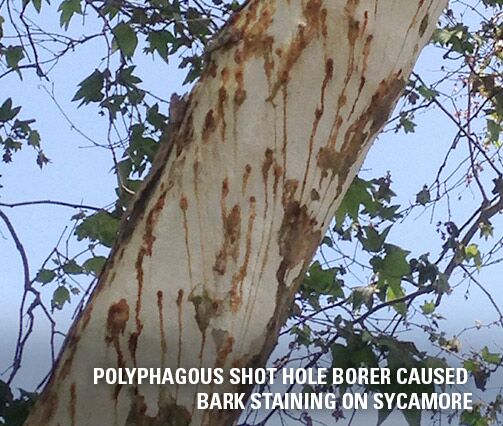
Arbor-wellness: Invasive Shot Hole Borer
If you have paid attention at all to the news the past few years, a very small beetle has made big news in Southern California. And rightly so, because it is one of the most destructive invasive pests we have encountered. Polyphagus shot hole borer is a very small beetle that attacks over 600 species of trees and shrubs in our region. It is currently found in L.A., Orange, San Bernardino, Riverside & San Diego counties. There is a very close relative of this beetle, called the Kuroshio beetle. They look exactly the same (even to entomologists) and cause very similar damage. Now the scientists are calling BOTH of them “Invasive shot hole borer”, which we have started doing as well. 
They are also called “ambrosia” beetles, which refer to beetles that carry a symbiotic fungus with them that is transferred to new trees when they burrow into a tree. It is this fungus – a type of fusarium wilt – that typically kills the tree.
What makes the understanding and control of this beetle even harder is that while it attacks a large number of trees and shrubs, it typically only reproduces in about 60 species, mostly hardwood trees. These include alders, avocado, box elder, liquidambers, maples, oaks, sycamores, and willows.
What can we do about it? Every site is different, so we really love to visit a site, see the trees currently there and discuss your budget and goals for the site. There are ways to protect trees if they haven’t been attacked, or to stop the problems if the tree is not too severely infected. Strategic removal of trees that are not a high priority for the site can be discussed as well.
If you are concerned about invasive shot hole borers and want to schedule an inspection, fill out the form below.